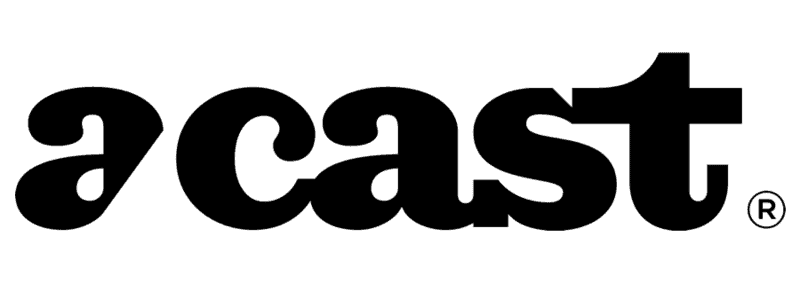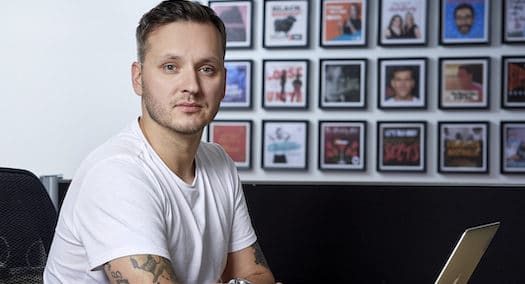Acast calls itself the number one podcast player in Australia with more than 26 million monthly listens. The platform hosts 10,000 shows globally.
Acast has recorded seven consecutive months of record listens in Australia, hitting 26 million local listens in September, with Acast able to sell ads on all of these.
The latest Australian Podcast Ranker lists ARN and SCA with a combined 20m downloads in October from a combined 700+ podcast series.
In six years, Acast has generated nearly $100 million in revenue for podcasters worldwide.
These statistics come from Henrik Isaksson, Acast’s regional managing director for Australia and New Zealand, during a discussion with Mediaweek about how the business has fared in 2020.
Acast doesn’t make any podcast content, but it enables thousands of others to do so around the world. As part of that process Acast has a content team which helps podcasters and publishers where it operates, including Australia.

“The tools we provide to publishers are predominantly geared to enabling them to distribute audio content and ingest ads into that content,” Isaksson told Mediaweek. “Some publishers, like the BBC or Guardian Australia, have very capable sales teams who also sell on that content. Some publishers want sales representation, some don’t, but we can sell on all of them.”
Sales revenue at Acast in this territory has doubled every year from 2017, said Isaksson. “We are hopeful that will continue. We have very ambitious goals, not just in Australia, but globally. We want to double sales revenue, double audiences and double our staff. We have held true to that in Australia. Audio is lucky in that it hasn’t been hit too hard by Covid.
“We have been having some very good conversations with the larger media agency holding groups.”
With a total of 10,000 podcast titles on the Acast roster, Isaksson noted both international and local publishers perform well here. “In 2020 we have seen locally produced content generating more listens than international content. That is absolutely amazing too see. As recently as three years ago there was not too much locally produced podcast content. Next year I am predicting about 70% of audiences here will be listening to Australian content on Acast in Australia.”
Acast also helps out its podcast partners with marketing when required. “We are currently hiring for a senior PR and marketing manager for Australia. Especially at the launch of a new podcast we work closely with the publisher and we put together a growth strategy.
“Launching a good podcast is hard, but getting it to big numbers is even harder, which is where our team comes in.”
Investing funds in marketing can certainly help grow a podcast, but it hasn’t been essential for everyone. “We aim to make sure a new podcast gets talked about in the right way in the right environment. Paid-for marketing can work, but it can be hard to find particular audiences.”
Some of Acast’s Australian podcasts are doing very well in international markets too. “The content can travel quite well, obviously in particular to English-speaking marketsWe have one Australian independent podcaster in particular who is doing very well in the UK and the USA. We encourage podcasters to look beyond Australia when they are creating a podcast if they want to grow audiences.”
When it comes to industry initiatives in Australia, Isaksson said he would like to see the profile of podcasting lifted. “Not just for advertisers, but also for the general community. From an industry standpoint we have barely scratched the surface.”
Isaksson said Acast supports the Podcast Ranker initiative and thinks it is good CRA is looking into raising the profile of podcasting. “But there is more than can be done on the Ranker and its profile. Having a ranker that looks like this is not the right initiative, but the ranker itself is a fantastic thing.”
For 2021 and beyond, Isaksson is predicting it will be a huge year for Acast. “We will continue hiring aggressively. We recently grew to 18 staff and we will be releasing new capabilities.
“The business is obsessed with technology and providing better tools for publishers and podcasters on our platform. We have a partnership with Nielsen which enables us to provide advertisers and brands with more data and data-driven campaigns.
“We are also about to offer keyword targeting based on the content of the podcast. If you are listening to a podcast about travel, we index all of that content, and depending on what they are talking about, advertisers can start targeting that podcast based on the conversation.
“We also have a partnership with Amazon where we now also publish all of our content. Publishers can then have their content broadcast to smart speakers and via Amazon Music.”
The attraction of the Acast business for many publishers seems to be that they keep complete creative control and ownership of the content. “That is maybe our secret sauce,” said Isaksson. “And maybe not so secret. [Laughs] We don’t request intellectual property rights when we enter a commercial partnership. That is why we are able to work with so many publishers because we are truly independent. Who are we to say what they should or should not do. That is none of our business and one of the reasons we keep winning so much content. Our content that helps with marketing and works with podcasters has grown from two people to six here because we have trouble keeping up with the demand.”
The most rewarding thing about Isaksson’s role – watching small publishers turn into big ones. “We have a podcast called Too Peas in a Podcast which is a slightly niche podcast from two mums who have kids with disabilities. They talk about challenges, not sugar coating that it can be hard having children with a disability. That show has grown from a very small base to doing big numbers. They are also funding the life they have and the challenges they face through our Acast funding model.”
